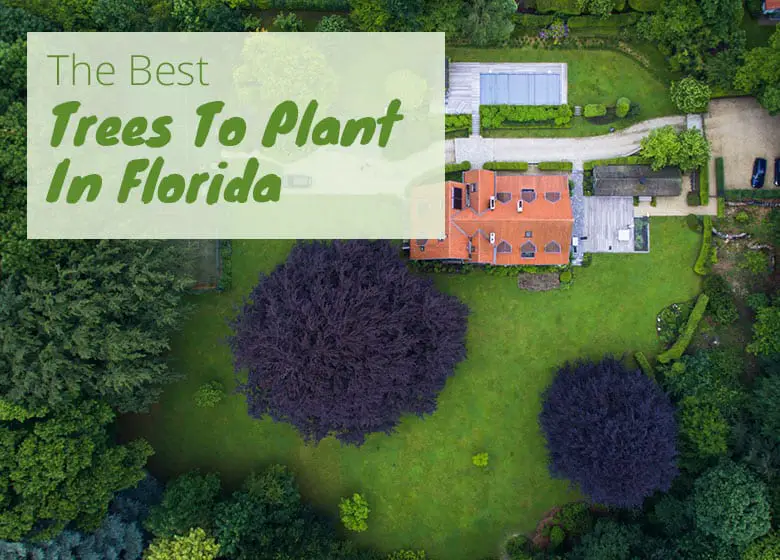
What are the best trees to plant in Florida
Some of the best trees to plant in Florida are Live oaks, Maples, Slash pines, Citrus, Loquats, Crape-Myrtles, Plumeria, and Buttonbush to name a few. The best tree for you is one that is going to fit into the space you have and will enjoy your local climate.
Florida’s subtropical climate makes it the perfect location to grow a wealth of different tree types. Whether you are looking for a tree that casts shade, produces fruit, is native to the region, or will add a colorful appeal with flowers, there’s a tree that will fulfill your heart’s desire.
Regardless of whether you have to contend with a salty environment along the coast, hot and dry conditions in southern portions of the state or colder North Florida winters, choices in Florida-friendly trees that thrive in what the state throws at them is vast.
Read on because we cover some of the best Florida-friendly trees hardy growing statewide, their characteristics, and preferred cultural conditions for headache-free growth.
Shade Trees That Grow in Florida
They don’t call Florida the “Sunshine State” for no reason.
Adding a shade tree to your landscape not only gives you a break from the hot temperatures and sun, but it also can lower your electric bills by shading the home, and who doesn’t like sending the electric company less money each month? Below are some hardy shade trees that thrive in Florida.
Bald Cypress
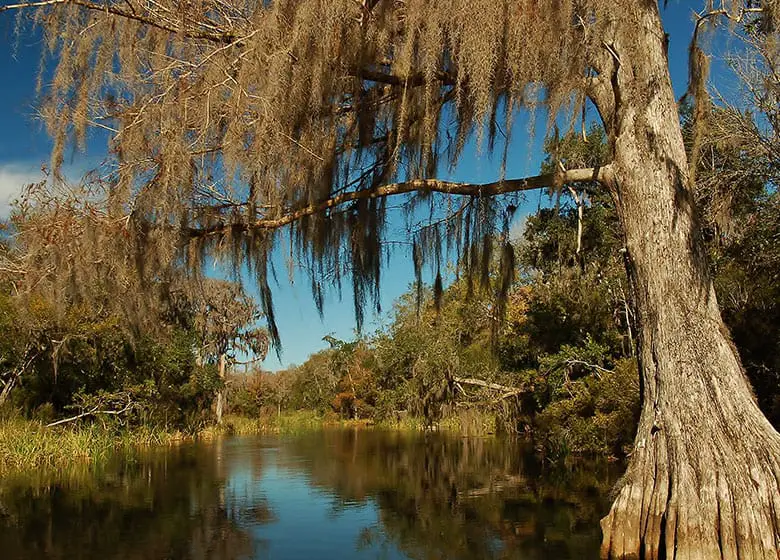
Hardy growing statewide, bald cypress (Taxodium distichum) trees are native, deciduous conifers that can live up to 600 years.
They make large and attractive additions to landscapes that have a tendency to be wet or dry, with trees quickly growing up to 150 tall and 35 feet wide. These attractive trees take on a pyramidal form and the green needle-like foliage adds interest in winter changing to a coppery-yellow color.
The fallen foliage highlights the tree’s reddish-gray peeling bark. Drought-tolerant bald cypress grows well in wet or dry locations and in full sun to partial shade.
Black Olive
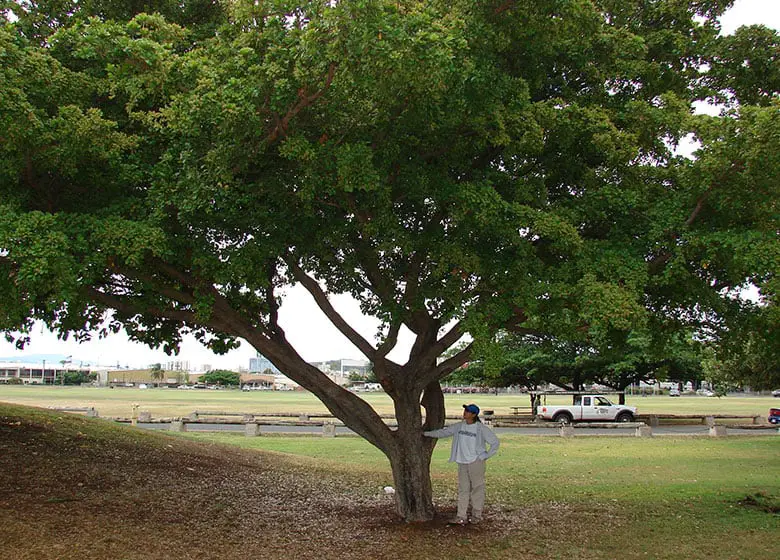
Native to the Keys, black olive (Terminalia buceras) trees are hardy growing in the warmest areas of South Florida.
Although the attractive tree doesn’t produce edible fruit, the evergreen develops into a pyramidal shape filled with strong, wind-resistant branches covered in 4-inch leathery, green leaves. Spikes filled with yellowish-green, inconspicuous flowers form in spring through summer, followed by black fruits.
Growing around 40 feet tall and wide, black olive makes an attractive shade or specimen planted in full sun to partial shade and in well-drained soil kept moist through regular water applications.
Live Oak
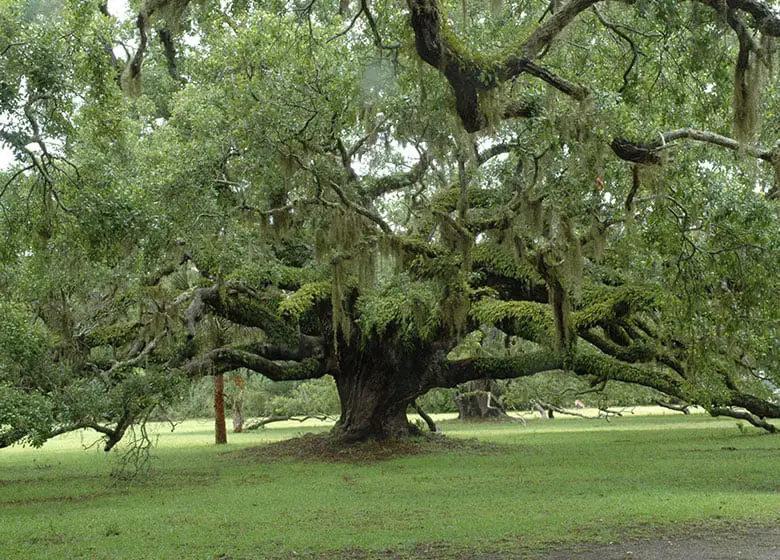
With its large sprawling branches usually draped in Spanish moss, live oaks (Quercus virginiana) are symbols of the Old South and are hardy growing statewide.
These large attractive trees grow around 60 feet tall with a width that is double. With trunks growing up to 6 feet in diameter and branches that curve gracefully, stately live oaks produce deep shade but their size requires room to spread.
These picturesque trees are long-lived and durable with good resistance to wind. The oak grows relatively quickly grown in full sun to partial shade and in well-drained soils kept moist through regular water applications until established. It’s drought- and salt-tolerant.
Mahogany
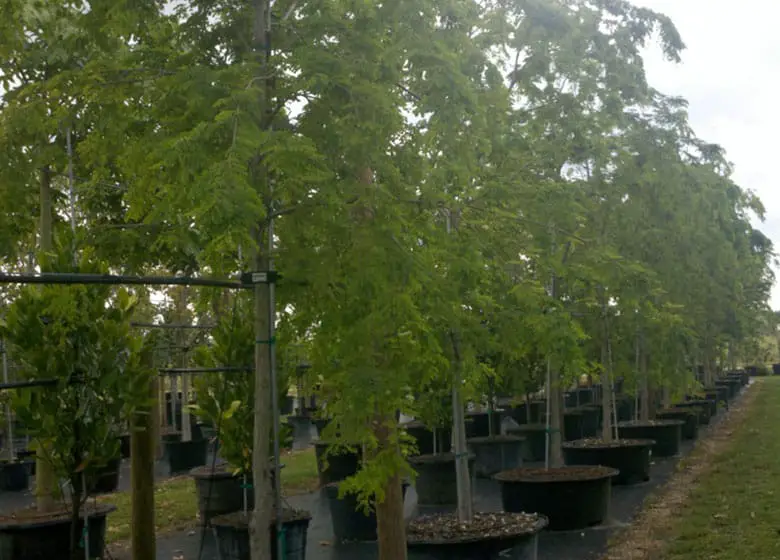
Mahogany (Swietenia mahagoni) trees are native popular shade trees used in frost-free landscapes in southern Florida.
They quickly develop into beautiful specimens with a rounded canopy filled with 4-inch green leaves. Green, inconspicuous flowers bloom in springtime followed by brown and woody, 5-inch fruits.
The wood is extremely hard and the entire tree is resistant to the state’s sometimes strong winds. Mahogany trees grow around 40 feet tall and wide and are sure to grab the eye’s attention in the landscape.
It grows best in full sun to partial shade, in a variety of soils from occasionally wet to well-drained, and is salt- and drought-tolerant.
Maple
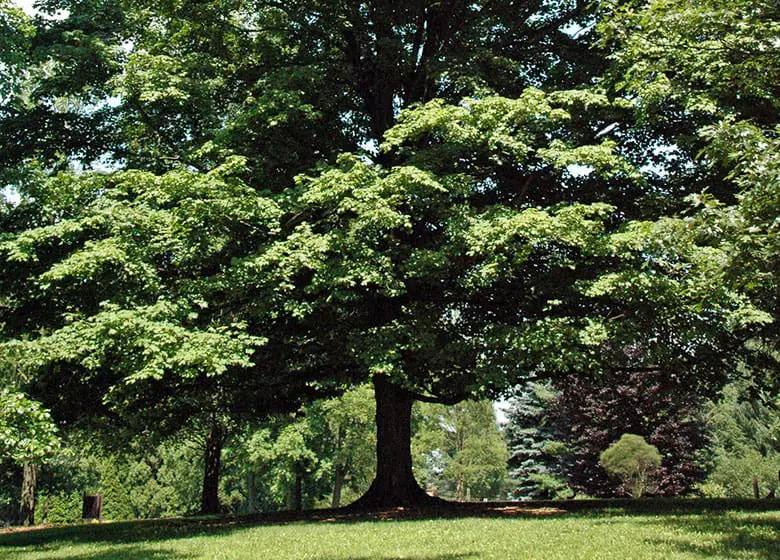
For a riot of fall colors erupting in shades of red, orange and yellow and lasting for weeks, you can’t go wrong with the native red maple (Acer rubrum). Come springtime, the maple puts on another show with the developing red foliage and fruits.
The fast-growing shade tree averages around 60 feet tall and 25 feet wide with a moderately dense, rounded canopy. It makes an outstanding ornamental tree that is sure to grab attention wherever used in the landscape.
Trees are moderately drought-tolerant and grow well in full sun to partial shade and in a variety of soils that are occasionally wet to well-drained.
Ficus
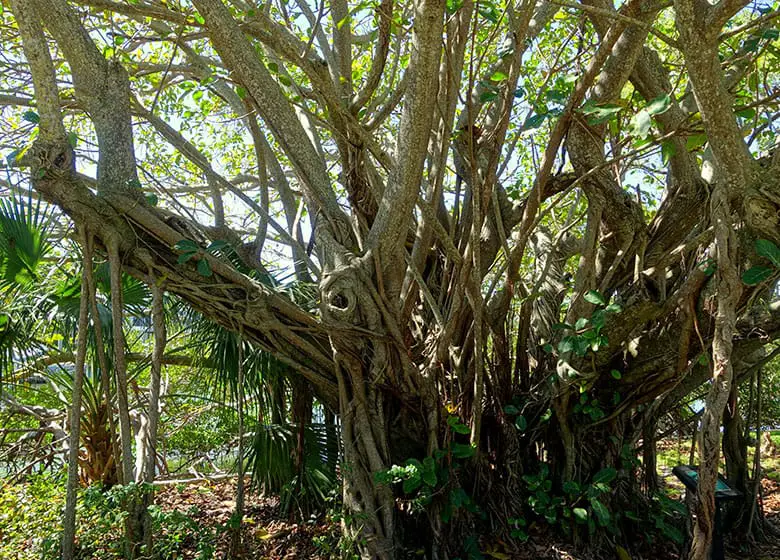
There are several varieties of Ficus that grow well planted outdoors as shade trees in Central and South Florida, although you more commonly see them growing in containers indoors.
Common varieties include, Indian Rubber Tree (Ficus elastic), growing 30 feet tall and wide and Fiddleleaf Fig (Ficus lyrata), growing 25 feet tall and wide. Both evergreens produce large attractive foliage and quickly develop into rounded canopies.
Although showy trees planted in the landscape, Ficus wood is weak and trees should be planted in sheltered locations from strong winds. Additionally, their roots are aggressive and trees should not be planted close to structures or walkways.
They are drought-tolerant and moderately salt-tolerant, performing well in full sun to partial shade and in well-drained soils.
Gumbo Limbo
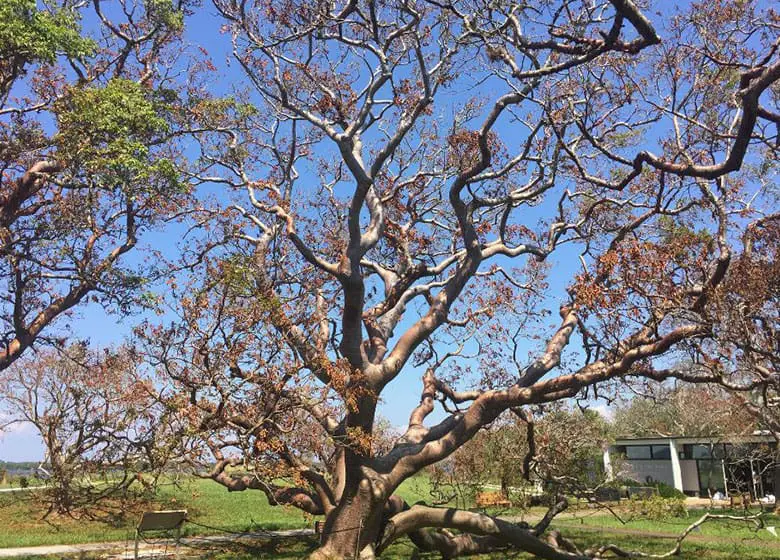
A South Florida native, gumbo-limbo trees will only thrive in the warmest areas of the state where frosts and freezes aren’t common.
It adds an interesting appeal to landscapes with its smooth and coppery-colored, peeling bark, leaving the trunk with a glossy appearance. Panicles of greenish-white flowers emerge in spring, which attracts various butterflies.
Gumbo-limbos form into large shade trees, growing anywhere from 25 to 50 feet tall, so they require a larger space in the landscape. These salt- and drought-tolerant, semi-evergreen trees tolerate growing in full sun to partial shade and in various well-drained soils.
Japanese Fern Tree
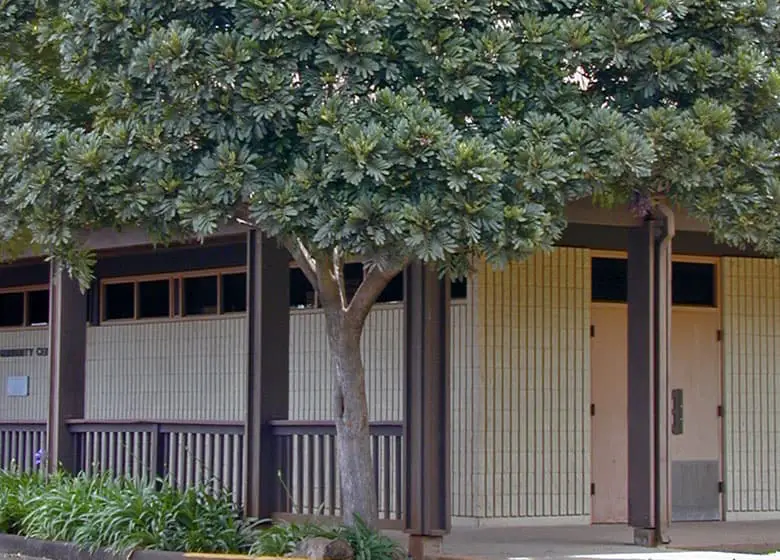
Those living in warmer southern regions of the state looking for an attractive and low-maintenance, small shade tree won’t be disappointed with the addition of a Japanese fern tree (Filicium decipiens).
Growing around 20 feet tall, it’s the perfect addition to smaller yards or used by a patio or porch area. The evergreen tree forms a dense, rounded canopy filled with thin, fernlike foliage and keeps its good looks without any effort on your part. It makes an eye-catching tropical specimen or accent tree grown in full sun to partial shade and in fertile well-drained soil.
Slash Pine
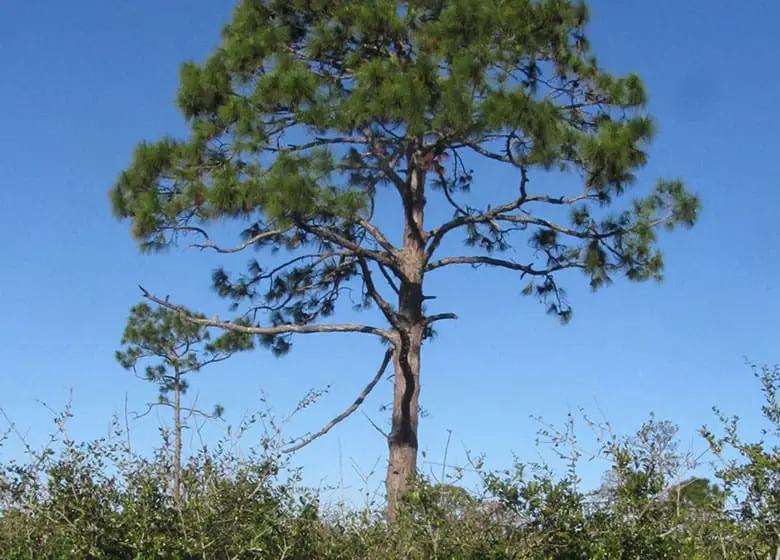
The native slash pine (Pinus elliottii) quickly develops into a large, multi-branched shade tree that quickly obtains a height of 100 feet and 50 feet spread.
Hardy statewide, the conifer’s rounded canopy fills with green, 8-inch long needles and 6-inch long pinecones. The branches are susceptible to breaking in windy conditions, so plant away from a structure.
It performs well in full sun to partial shade and in a variety of acidic soils that drain well or experience occasional wetness. Slash pines are tolerant of drought conditions and are moderately tolerant of salt spray.
Fruit Trees That Grow in Florida
Florida’s consistently warm temperatures make it the perfect host to grow a wealth of different fruit trees that thrive in the subtropical climate. This gives the homeowner a variety of choices in different fruit trees that won’t grow in cooler U.S. areas.
Banana
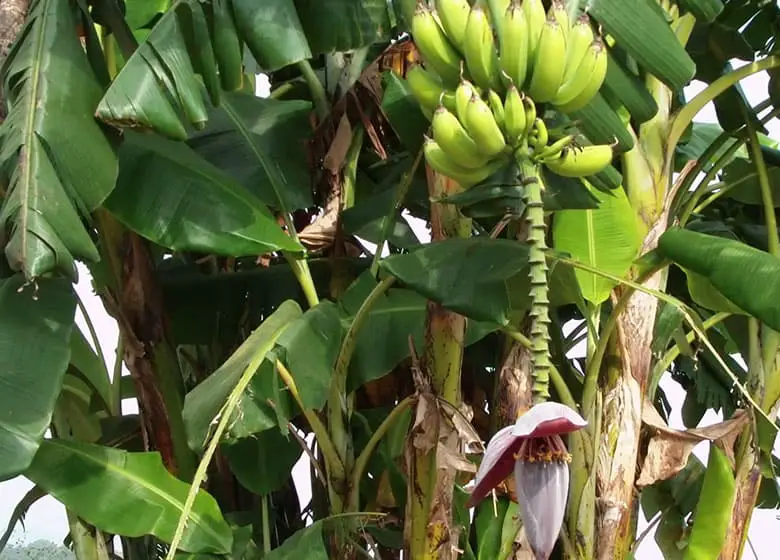
Florida gardeners living in Central and South Florida will find a vast variety of banana (Musa spp.) tree varieties that will thrive in their landscapes giving any area a tropical effect.
Choices include everything from trees producing large to very small fruits, large trees growing to 30 feet tall and dwarfs growing around 5 feet tall, to those that produce a variety of tastes.
Trees form into upright stalks topped with green flowy leaves that grow around 3 feet in length. Stalks of showy flowers in colors of purple or orange bloom in spring and eventually turn into the fruit.
Banana trees thrive in full sun to partial shade and in fertile, well-drained soil and given regular water applications.
Citrus
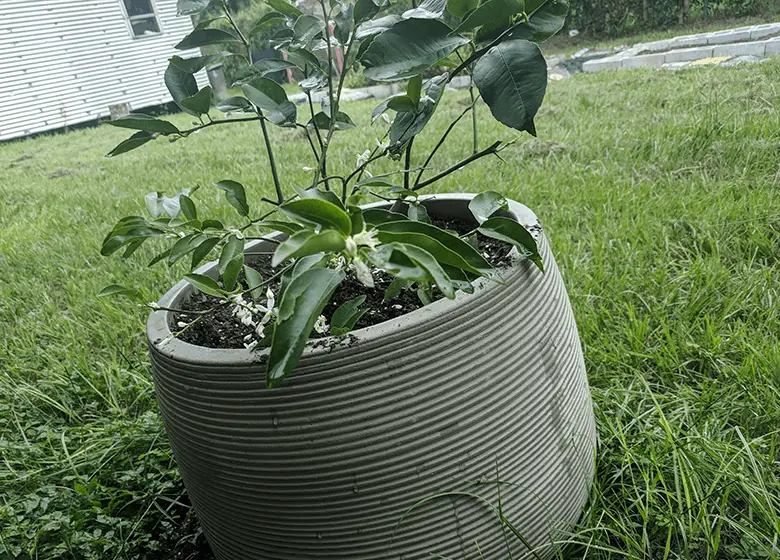
All types of citrus (Citrus spp.) trees perform well in warmer areas of Central and South Florida, making attractive landscape additions with their deep green and glossy foliage.
Whether you prefer oranges, tangerines, grapefruit, limes, lemons or mandarins, you can easily grow them in these areas of the state. Depending on the type, trees grow anywhere from 15 to 30 feet tall and with of spread of 15 to 25 feet.
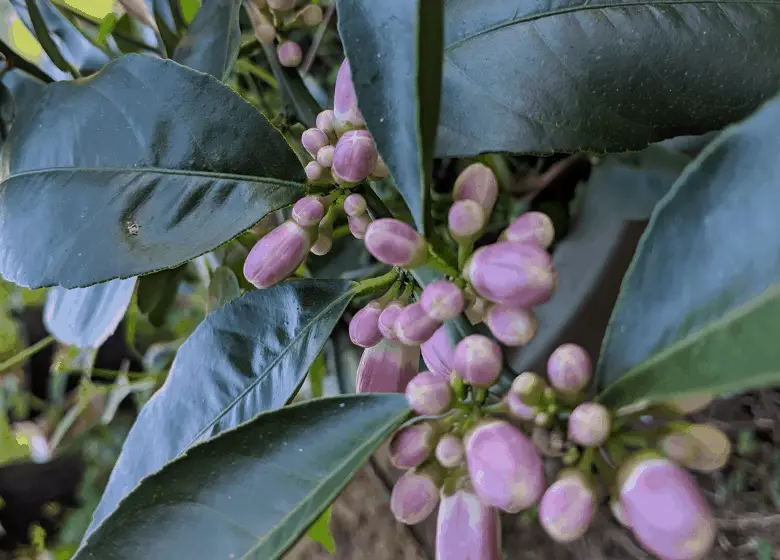
The showy white flowers bloom in spring and winter, filling the landscape with their heavenly scent. Tasty fruits follow the blooms. These tough heat-tolerant trees grow best in full sun and in well-drained acidic soils with regular water applications.
Figs
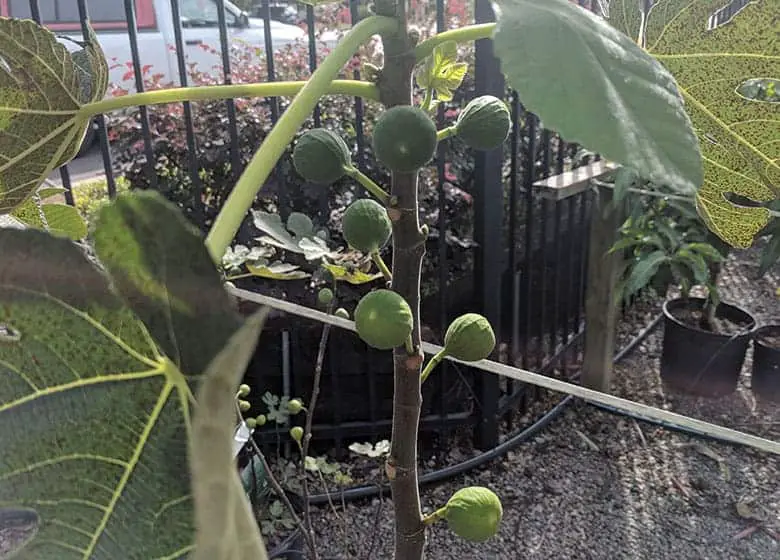
Figs (Ficus carica) are hardy growing throughout Florida and gardeners have a wealth of varieties from which to select.
Figs grow into sprawling trees averaging around 25 feet tall and almost as wide, with their canopies densely filled with large, flat leaves that are deeply lobed. Springtime brings the blossoms, which eventually turn into the tasty fruits.
Fig trees require a large space in the landscape to spread out. Trees perform best planted in a sunny site and in fertile, well-drained soil kept moist through regular water applications.
Jackfruit
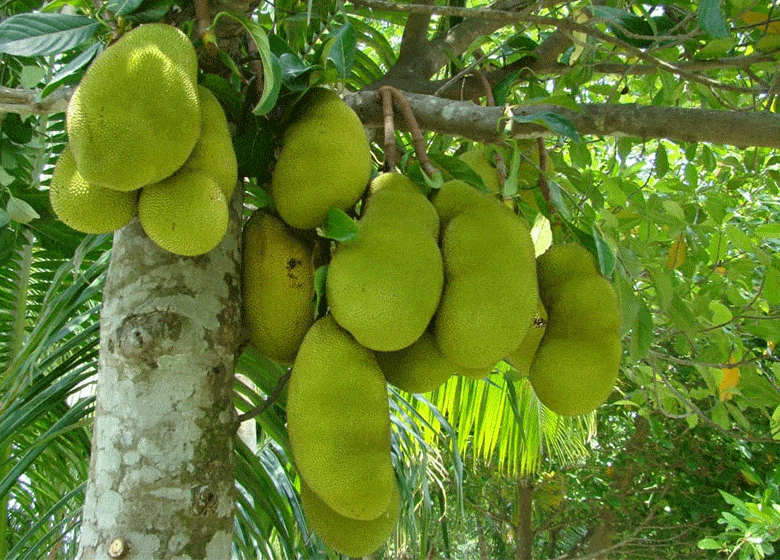
For an interesting and tasty tropical fruit addition thriving in consistently warm areas of the Florida, gardeners should consider growing a Jackfruit (Artocarpus heterophyllus) tree.
The evergreen tree makes a good shade tree, growing around 40 feet tall and covered in large, glossy green and leathery leaves. Flowers form along the trunk and larger branches, which turn into the large fruits.
Jackfruits take around 160 days to ripen and usually are ready to pick in summer and fall, with fruits weighing anywhere from 10 to 60 pounds. Trees grow well in a variety of well-drained soils and planted in full sun, as well as having a tolerance to windy conditions.
Loquat
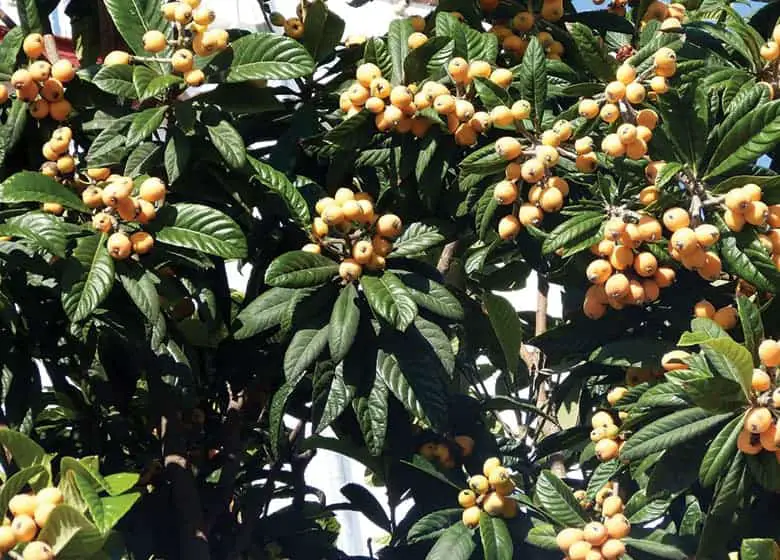
Also called Japanese plum, loquat (Eriobotrya japonica) trees are hardy growing throughout Florida.
These are attractive smaller trees that are perfect for landscapes on the small side, with trees only growing around 20 feet tall with a width of 25 feet. The symmetrical, round canopy fills with 12-inch, large, oblong leaves with showy panicles of white fragrant flowers blooming in fall.
In late winter and spring, tasty yellowish-orange, 1- to 3-inch fleshy, pear-shaped fruits form in clusters. This fast-growing evergreen grows best located in full sun to partial shade and in well-drained soil given regular water applications. It’s moderately tolerant of drought and salt.
Mulberry
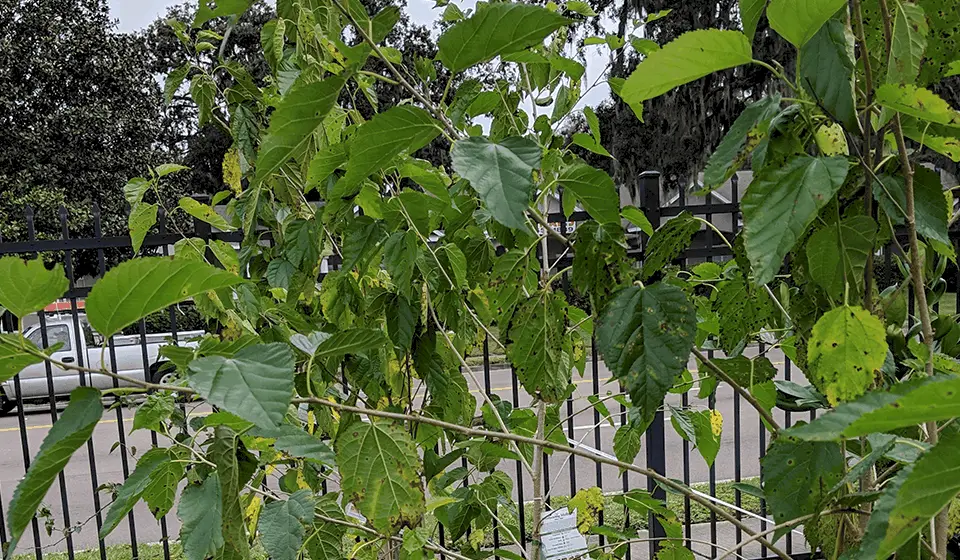
Mulberry trees are large trees suitable used for shade, natural or wildlife gardens, as well as offer the benefit of sweet berries, which are edible but you may have to fight the birds and squirrels for them they are so tasty.
When it comes to fruiting types you should plant black mulberry (Morus nigra) or the native red mulberry (Morus rubra), which produce fruits up to 1.5 inches long. Mulberry trees grow best in Central and North Florida, growing up to 30 feet tall with a similar width. The deciduous tree has a rounded shape, and flowers and fruits in springtime.
The dropped fruit can be messy so plant away from the house in a sunny to partially shady site. The tough tree grows well in a variety of Florida soils and is drought-tolerant once established.
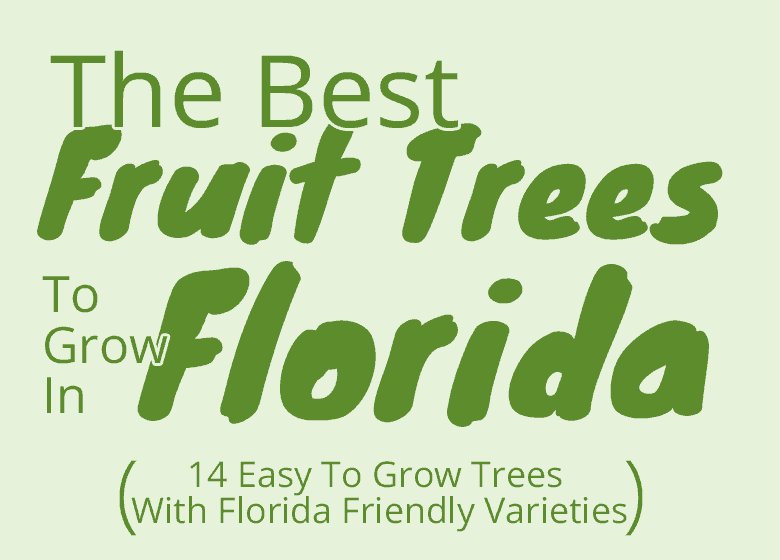
Flowering Trees in Florida
Nothing adds interest and color to a Florida landscape like flowering trees. After all, Ponce de Leon named the area “florido,” which means “flowery” or “full of flowers” in Spanish, so adding a tree that produces colorful blooms only seems natural and there’s a large variety from which to select.
Crabapple
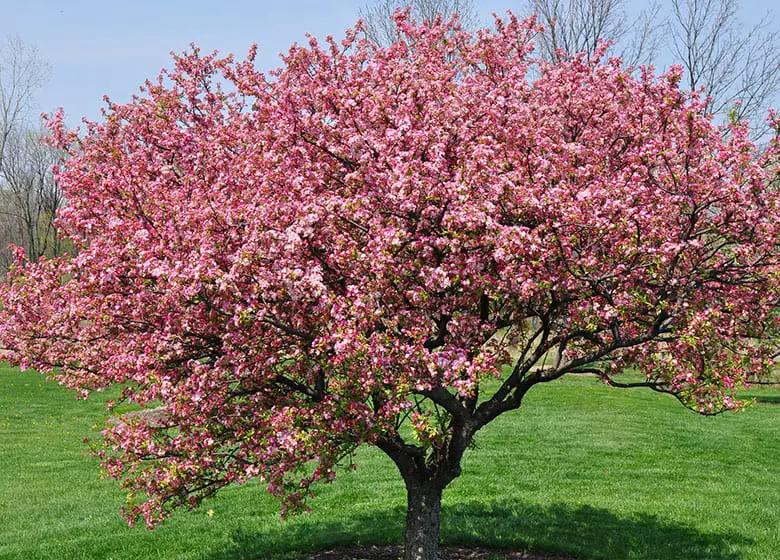
Only those living in North Florida can grow a crabapple (Malus spp.) tree and there are several varieties to choose from that are hardy in the area.
The pleasantly fragrant and showy flowers burst onto the scene in spring and depending on the type can be double or single ranging in colors of pink, white and red. Round .5 to 1-inch fleshy fruits follow the flowers in colors of red, green, orange or yellow, depending on the cultivar.
Trees grow 10 to 25 feet tall and wide with symmetrical canopies filled with glossy green leaves. The attractive medium-sized trees work well as specimens or even in containers. Grow in full sun and in well-drained soils.
Crape-Myrtle
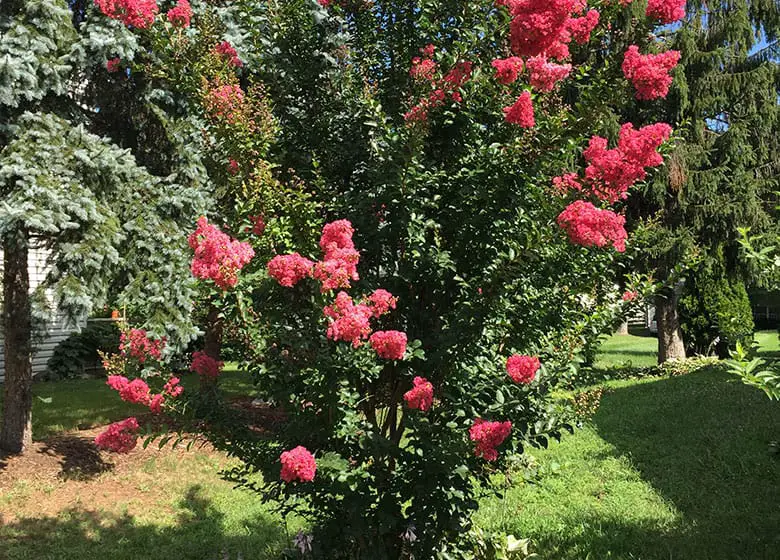
With a dazzling display of color all summer, gardeners throughout Florida can add this popular small tree in their landscapes. Crape-myrtle burst onto the scene in spring with the tree’s canopy filled with showy flowers in colors of white, pink, red or purple.
If that wasn’t enough, in fall, the deciduous tree comes alive with leaf colors or yellow, orange and red. With multiple varieties to select from, trees grow anywhere from 10 to 30 feet tall, with spreads of 15 to 25 feet, so there’s a selection to fit anyone’s desire.
Use as a shade tree, accent tree or specimen and it grows well in containers. Crape-myrtle performs best located in full sun and in well-drained soil. It tolerates drought and has a moderate tolerance to salt.
Dogwood
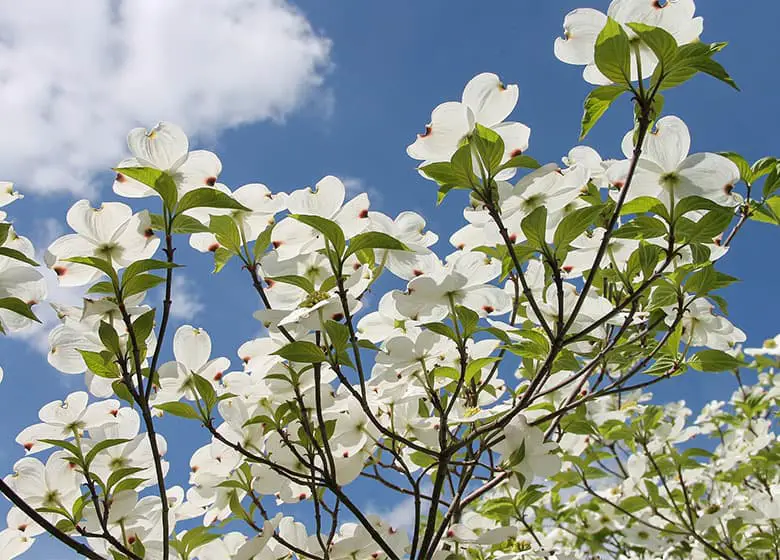
Native flowering dogwood (Cornus florida) is hardy in cooler sections of Central Florida along with North Florida and is sure to add color to the landscape spring through fall.
Showy flowers fill the canopy in springtime and depending on the variety are red, white, or pink. In the fall, the blast of color continues as the green leaves turn red, followed by attractive red berries.
Growing 20 to 30 feet tall and wide, deciduous dogwood makes a colorful statement used as a specimen, shade tree, or used near a porch or patio. Grow in full sun to partial shade and in a deep fertile soil that drains well.
Hydrangea
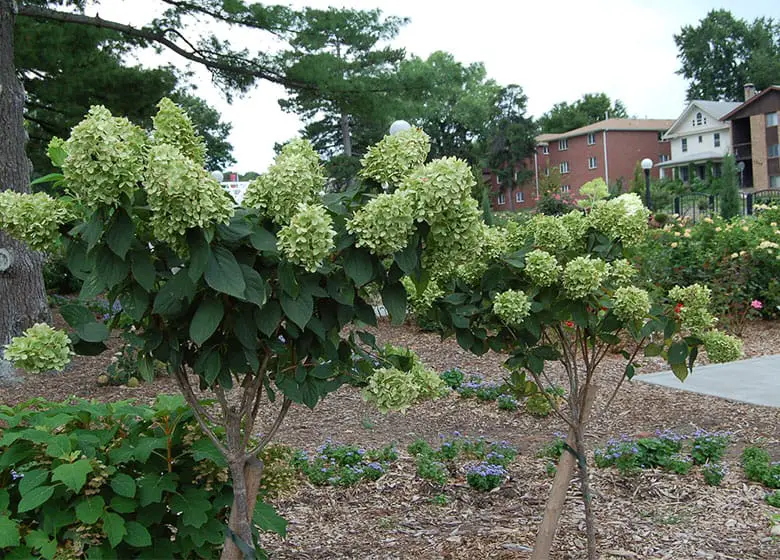
Putting on a summertime show of a flower-filled canopy, only those living in colder North Florida can grace their landscapes with hydrangea (Hydrangea paniculata) trees.
Quickly reaching a mature size of 15 to 25 feet tall and a similar spread, hydrangea fills with deciduous, dark green leaves in spring that are around 6 inches long, changing to yellow in fall.
In summer, showy long panicles filled with creamy white flowers burst onto the scene, maturing to a purplish-pink. Hydrangea is suitably used as a small tree, specimen, and accent plant or grown in containers.
For the best performance, grow in full sun to partial shade and in loamy, well-drained soils kept moist through regular watering.
Magnolia
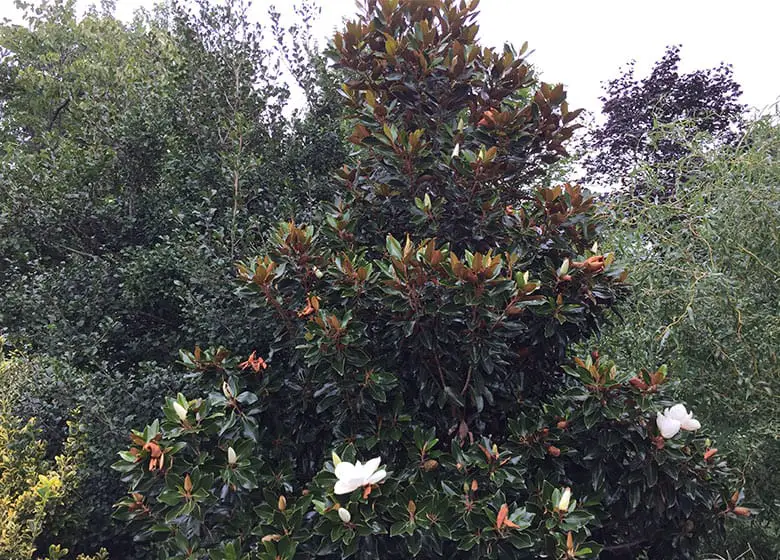
Although there is a wealth of varieties to select from, gardeners throughout the state wanting a shining representative of the Old South should plant the majestic southern magnolia (Magnolia grandiflora) tree.
Southern magnolias form dense, evergreen, rounded canopies growing 60 to 80 feet tall and a spread that’s half. In late spring through summer, landscapes fill with the fragrance of the very showy 8-inch diameter, waxy white flowers.
Southern magnolias make beautiful specimens or shade trees, growing best in full sun to partial shade planted in well-drained, peaty soils kept moist through regular watering.
Plumeria
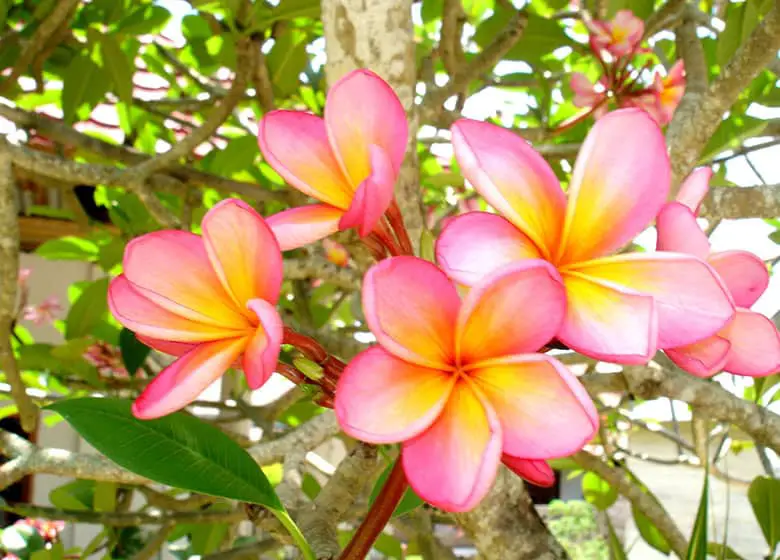
Those looking for a fragrant flowering small tree that gives a tropical appeal to landscapes should look no further than plumeria (Plumeria spp.).
They prefer a frost-free climate, so those in Central and South Florida will have the best success growing them outdoors in the landscape.
The sausage-like branches fill with foot long, green deciduous leaves in late spring, followed by heavily fragrant blooms in shades of white, yellow, red, pink, or a mix of several hues. Trees have a high tolerance to salt and drought, growing best in full sun to partial shade and in a variety of well-drained soils.
Royal Poinciana
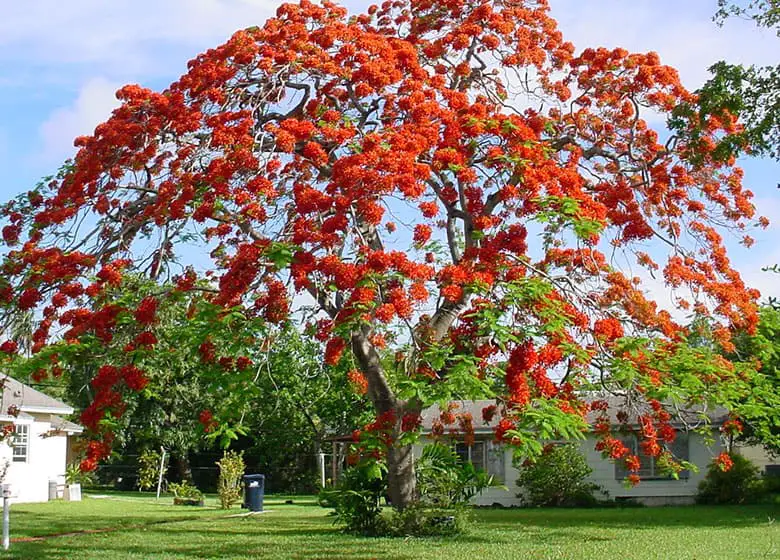
For a tree that’s sure to grab everyone’s attention for those living in frost-free regions of Florida, the royal Poinciana (Delonix regia) won’t disappoint.
Spring throughout summer, the entire canopy turns a riot of reddish-orange as it fills with clusters of flowers. The deciduous and soft feathery leaflets offer the landscape dappled shade the rest of year.
Royal Poinciana trees quickly grow around 40 feet tall, with the canopy usually wider than the tree’s height. For the best performance, grow in full sun and in well-drained soil. The tree has a high tolerance to drought and is moderately tolerant of salt. It works well as a specimen or shade tree.
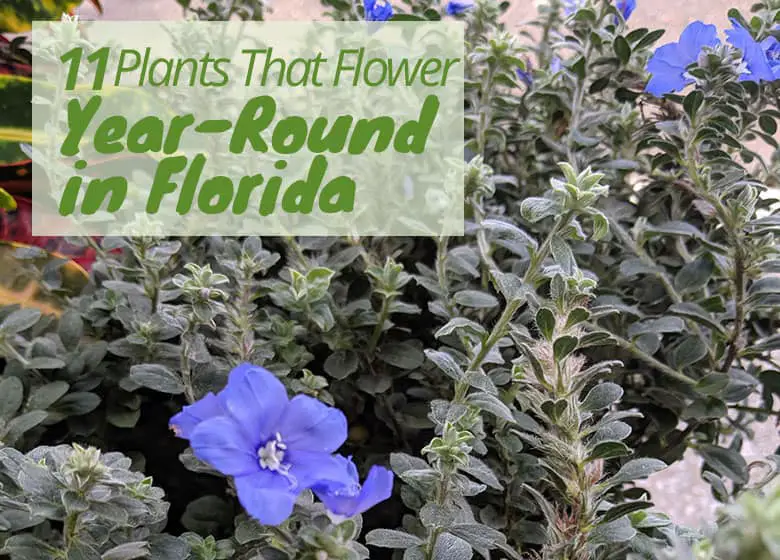
Native Florida Trees
Regardless of where you live within the state, adding native trees to your landscape almost guarantees problem-free growth. Native trees of Florida are used to the environmental conditions the state throws at them and keep growing without skipping a beat.
Buttonbush
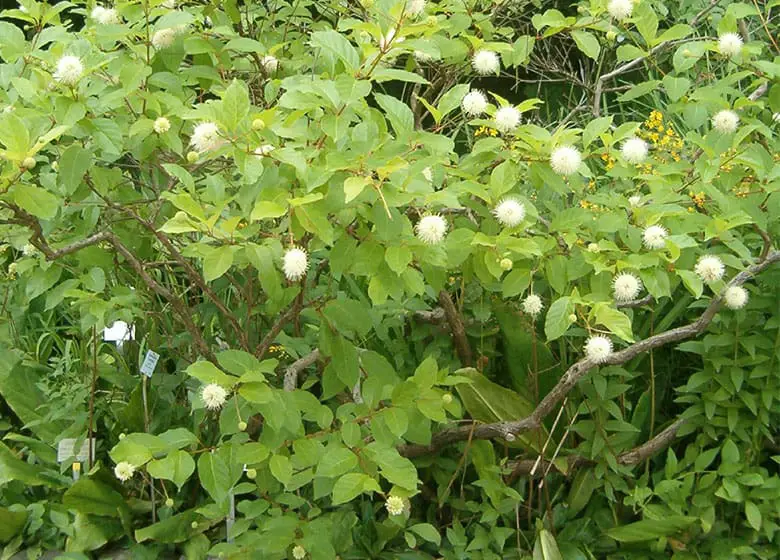
For a small flowering tree that’s hardy growing statewide, buttonbush (Cephalanthus occidentalis) might be a good fit.
Medium-green, whorled leaf arrangements fill the deciduous tree in early spring followed by noticeable 1.5-inch diameter, white globe-like flowers in late spring.
Once the flowers fade, buttonbush still grabs attention with the showy small, round fruits that are red. The tree is suitably used in butterfly gardens, specimen, mass planting or along borders. Grow in partial sun to partial shade and in well-drained soils.
Buttonbush has a low tolerance to salt spray.
Hornbeam
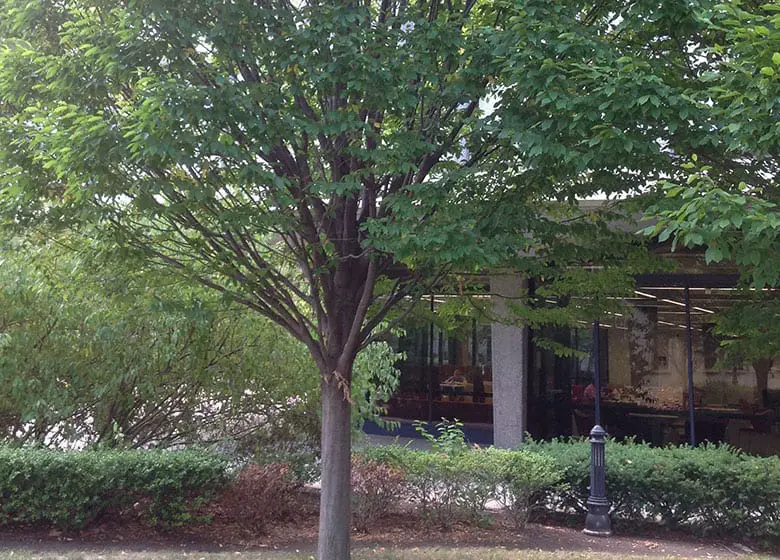
Hornbeam (Carpinus caroliniana) makes an attractive medium-sized tree for those living in North or Central Florida. The deciduous tree’s rounded canopy fills with small green leaves in springtime and the more sunlight the tree gets the denser the canopy.
In springtime, inconspicuous flowers bloom in colors of yellow or orange. It slowly obtains a mature height of 20 to 30 feet with a similar spread.
Hornbeam works well as a shade tree, specimen, used near a deck or patio or accent tree. For the best results, grow in full sun to partial shade in a variety of soils from well-drained to occasionally wet.
Loblolly Bay
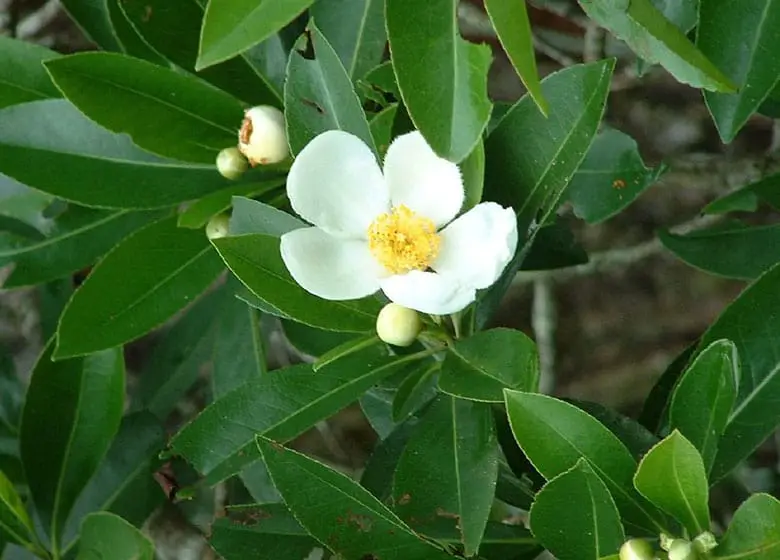
Loblolly bay (Gordonia lasianthus) is a native, evergreen tree offering attractive looks, flowers, and fall colors for those living in North and Central Florida.
Trees take on a columnar shape, growing anywhere from 35 to 60 feet tall with a spread of about half the height. The canopy fills with 7-inch, glossy leaves that are dark green, but in fall and winter change to an eye-catching red.
In late spring through summer, 3-inch, white, cup-shaped flowers dot throughout the tree, bringing more interest. Loblolly bay is useful as an espalier, specimen, or in native gardens.
It grows best planted in partial sun to shade and in moist soils, as it has a low tolerance to drought and salty conditions.
Red Maple
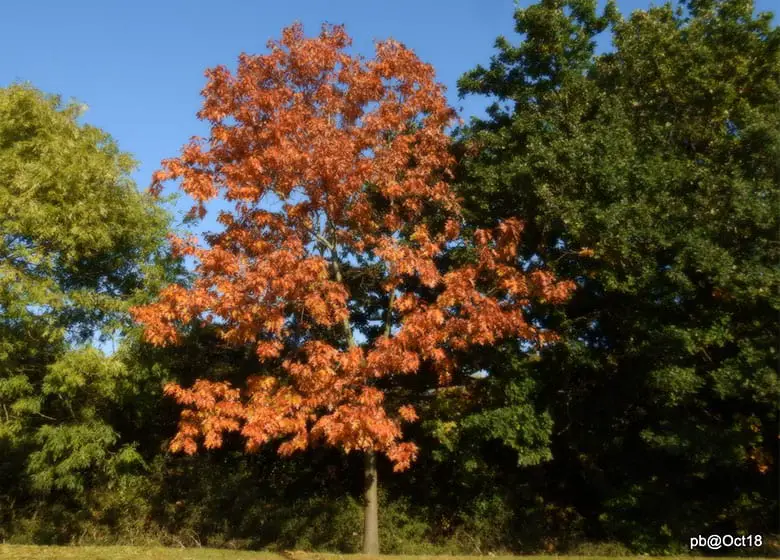
For a riot of fall colors erupting in shades of red, orange and yellow and lasting for weeks, you can’t go wrong with the native red maple (Acer rubrum). Come springtime, the maple puts on another show with the developing red foliage and fruits.
The fast-growing shade tree averages around 60 feet tall and 25 feet wide with a moderately dense rounded canopy. It makes an outstanding ornamental tree that is sure to grab attention wherever used in the landscape.
Trees are moderately drought-tolerant and grow well in full sun to partial shade and in a variety of soils that are occasionally wet to well-drained.
Rusty Blackhaw
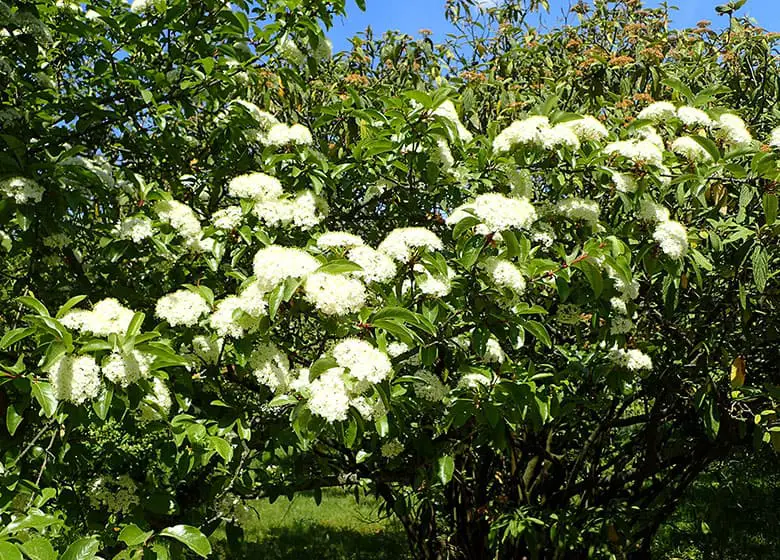
Hardy growing in North Florida through central sections of the state, rusty blackhaw (Viburnum rufidulum) trees adds brilliant color to the landscape year-round.
These smallish trees average around 20 to 25 feet tall and wide. In spring, the deciduous, 3-inch long, glossy foliage is dark green but in fall, it puts on a showy display with leaves changing to bright red and purple.
If the attractive leaves weren’t enough, in spring, the canopy fills with 5-inch clusters packed with small white blooms. Rusty blackhaw grows well in containers or planters, used near a deck or patio or as an accent plant. It grows best planted in full sun to partial shade and in well-drained soil that is fertile but is tolerant to drought.
Slash Pine

The native slash pine (Pinus elliottii) quickly develops into a large, multi-branched shade tree that quickly obtains a height of 100 feet and 50 feet spread. Hardy statewide, the conifer’s rounded canopy fills with green, 8-inch long needles and 6-inch long pinecones.
The branches are susceptible to breaking in windy conditions, so plant away from a structure. It performs well in full sun to partial shade and in a variety of acidic soils that drain well or experience occasional wetness. Slash pines are tolerant to drought conditions and are moderately tolerant to salt spray.
Sycamore
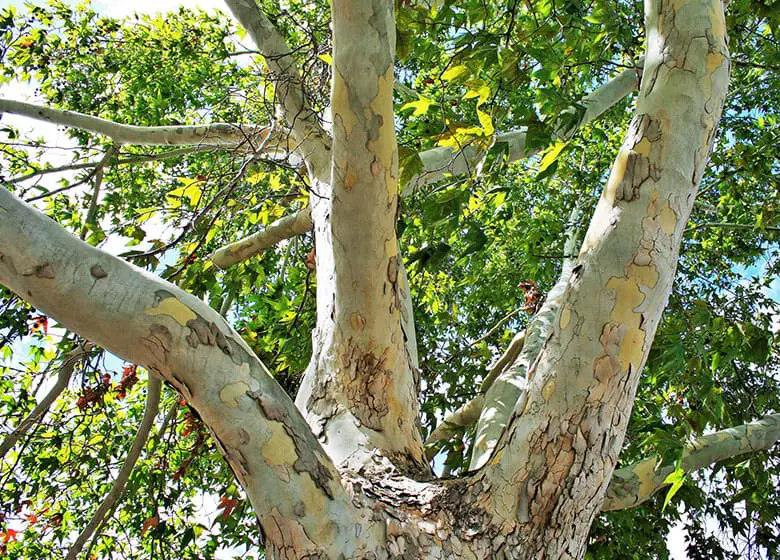
Hardy in North Florida and central areas of the state, native sycamore (Platanus occidentalis) trees develop into large trees growing up to 90 feet tall and 70 feet wide, so they require room to spread out.
The round and spreading canopy fills with green, star-shaped, 8-inch leaves that change to yellow in fall before they drop in winter. Small red flowers bloom in spring but are inconspicuous and 1-inch round, brown fruits follow.
Sycamores make good shade trees but consider the tree is messy so you might want to plant it away from the house. It grows best in full sun planted in a variety of well-drained soils kept moist.
How to Choose the Right Tree
Besides the obvious attributes, trees offer homeowners and your landscape a world of benefits, especially planting one that’s suitable for your landscape’s environment. Trees are a valuable asset to landscapes in the following ways:
- When trees cast shade upon a structure, they lower temperatures in summer, which can lower your electricity bill.
- They increase the value of your property.
- By removing particulates from the air and air pollution, trees can improve the quality of air.
- Trees help reduce flooding and pollution by their root systems taking up the extra water that would have otherwise flowed off the landscape creating stormwater runoff.
- Trees that are well-chosen and properly maintained can actually help protect your house from hurricane-force winds.
With all the different varieties of trees that are hardy growing statewide, you shouldn’t have any problem fulling your desires, whether that’s a flowering, fruiting or shade tree. However, it’s important to plant the right tree in the right place.
Knowing what you desire in the tree’s attributes will help in narrowing the field of choices. Additionally, selecting a tree that fits your desires as well as your landscape’s environment assures years of problem-free growth and minimal maintenance.
The University of Florida outlines five components for selecting the right tree for the right place in your Florida landscape.
- Evaluate the attributes of the proposed planting site both above and below ground.
- Consider any modifications you must make to the proposed planting site.
- Think about how much maintenance you’re willing to put in for a healthy tree. Would you prefer a tree that’s low-maintenance? On the other hand, you don’t mind if the tree’s a bit fussy.
- Know what attributes you desire in a tree-like flowers, fruit, evergreen, etc.
- After you’ve considered the top four, then decide on a tree that fulfills your desires and can thrive in the proposed planting site.
Becoming familiar with the planting site’s light conditions and soil, as well as knowing the desired tree’s cultural preferences, assures you won’t be spending time in the yard nursing a sickly tree.
Of course, gardeners throughout the state are not only lucky with the subtropical weather experienced most of the year, but they also have an almost endless selection of trees that will thrive in their landscapes.
You Might Also Be Interested In:


